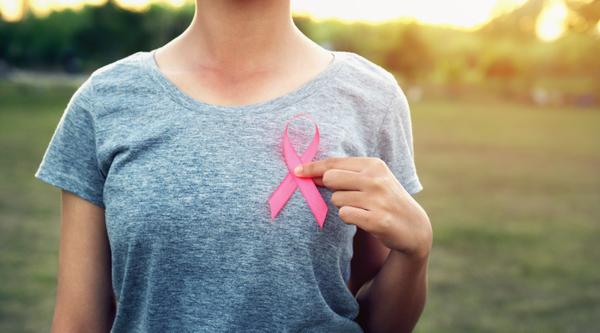Breast cancer is the second most common kind of cancer in ladies and is characterized by the growth of malignant tumors in the glandular tissues of the breasts. While no one understands why some women develop breast malignancy and others do not, several variables have been identified as risk factors for breast malignancy.

Melanoma in women breasts form shortly before, during, or after menopause, with 75% of all cases being identified after age fifty. A major health issue in many areas of the world, it is particularly prevalent in developed countries, and in United states and Western Europe, where life spans are longer, the occurrence is highest. For instance, it is estimated that over 10 per cent of women in the United States will establish the disease at some point in their lives.
Occurrence rates are lower for black and Asian females than for white, Hispanic, and Native American females. Despite the lower incidence of disease, survival rates have remained constantly lower for dark women. Younger dark women who get breast cancer are more likely to get a particularly aggressive and lethal form of the condition; hence a higher death rate from cancer than white women in the same age group group.
A medical diagnosis of cancer has numerous psychological, emotional, relational, and sex ramifications for the woman and the girl family. One major worry of ladies with breast is the fear of their partner's potential response from possible disfiguring surgeries. Sexual malfunction is frequently associated with breast malignancy patients though other factors such as premature menopause, depressive disorders, the impact of medications and chemotherapies and pre-existing lovemaking problems may all contribute to lovemaking dysfunction after breasts cancer diagnosis.
Although the diagnosis of cancer can be a devastating experience, most women deal successfully. Statistic show that, although cancer of the breast is an important cause of premature death, the number of deaths it causes is approximately equivalent to those of lung cancer (a predominantly preventable disease) and vastly smaller than that of cardiovascular disease. Today, more women are enduring breast cancer than in the past. Over two million women are cancer of the breast survivors. With earlier detection and prompt and appropriate treatment, the outlook for females with breast cancer can be positive.
Cancer cells, also called carcinomas, form by abnormal cellular division. This happens when the procedures that control normal tissue growth and repair breaks down leading to changes in the protein produced due to changes in DNA. This causes an excessive, uncontrolled development of abnormal tissue, which invade and destroy other tissue. Cancerous cells, which tend to ruin an increasing proportion of normal breast cells over time, may spread, or metastasise, to other parts of the body. Such genetic variations in DNA can be there at birth, predisposing a woman to getting cancer of the breast earlier in life, or can be caused by direct exposure to hormones and carcinogens (cancer-causing agents).
Breast cancer is not a solitary disease. There probably are in least 15 various kinds, each with a different rate of growth and different tendency to metastasise (spread to components of the body). It is local only briefly and can produce in many parts of the breast: in the whole milk ducts, between system, in fats, in lymph or blood vessels, in the nipple, and in the lobes where milk is manufactured.
Breasts cancer can be referred to as being "in situ" or invasive. Within situ refers to malignancy that has not distribute beyond its site or origin while invasive applies to cancer that has spread to the tissue around it. The particular most common type is invasive ductal carcinoma, accounting for about 70 to 80% of breasts cancers. It begins in a dairy duct, breaks through the duct wall structure and invades the breast's fat. Another 10 to 15% of breast cancers are invasive lobular carcinomas, which start in the milk-producing glands and can spread elsewhere. Nevertheless other, rarer varieties of cancer of the breast are likely to have the prognosis than these two most typical types.
Causes and Danger Factors
Nobody knows why some women develop cancer of the breast and others do not. Although the disease may affect young women, 75% of all cancer of the breast occurs in women age group 50 or old. Several variables have been determined as risk factors for breast cancer.
Family or Genetic Risk
Women who have a new mother or sister diagnosed with breast cancer are in almost three times the risk. Inherited mutations in breast cancer genes predispose women to both breasts and ovarian cancers, often at younger ages. The major genes that increase this susceptibility are BRCA1 and BRCA2.
The pattern of gift of money in families that are carriers is such that fifty percent of the offspring inherit the mutations. Women who are carriers of variations in BRCA1 or BRCA2 have a lifetime risk of 56 to 87 percent for breast cancer and an increased risk of over 40% for ovarian cancer. However, not every women with such profiles actually have either of the BRCA1 or BRCA2 gene mutations that have been recognized for cancer of the breast. In truth, the latter variations account for no more than 5%-10% of all instances in the usa.
Exposure to Estrogen
These risk factors, all of these associate to hormone-based life events, suggest that cancer of the breast is for some reason affected by prolonged exposure to female sexual intercourse hormones, such as estrogen. Thus women with a long menstrual history who started menstruating early (before age 12) and stopped menstruating late (after 55) are at the upper chances. At high risk consideration are nulligravida women (who have never been pregnant) and nullipara women (who have not given birth). Also women who have their first child following the age of thirty have almost a threefold increase in risk compared to those giving birth the 1st time at age 20 or younger.
To know more details visit here: CBD for Women


No comments:
Post a Comment